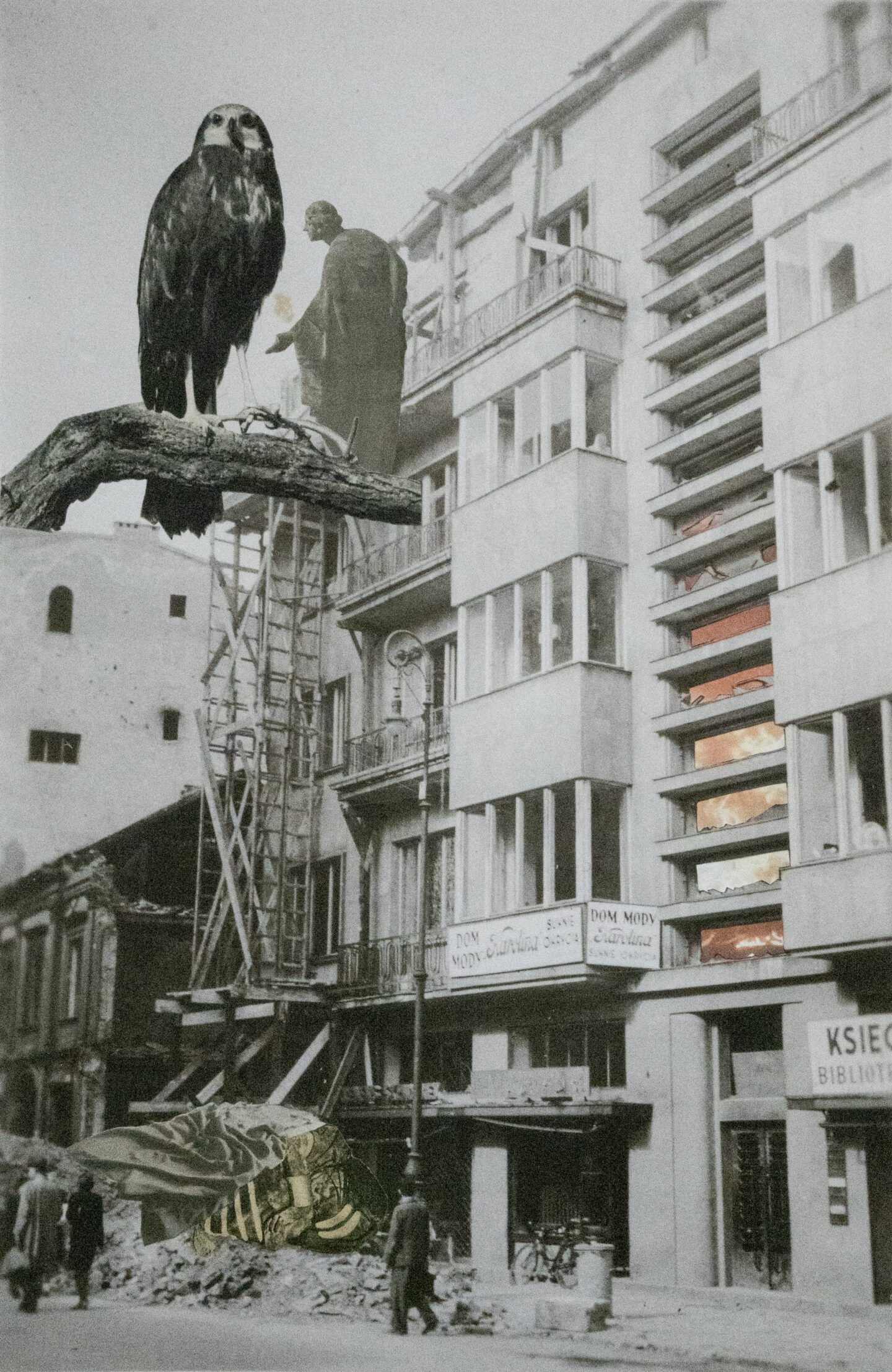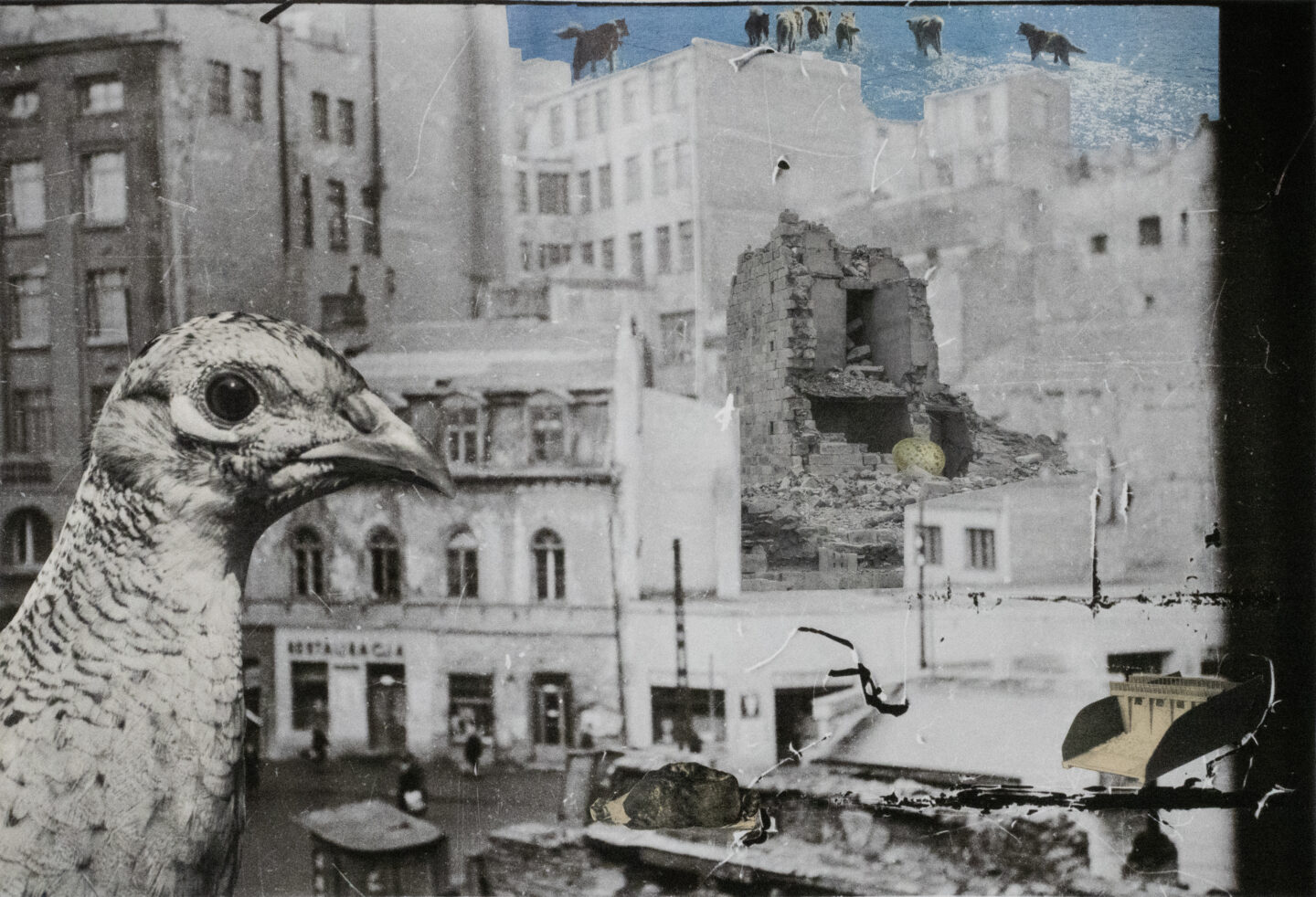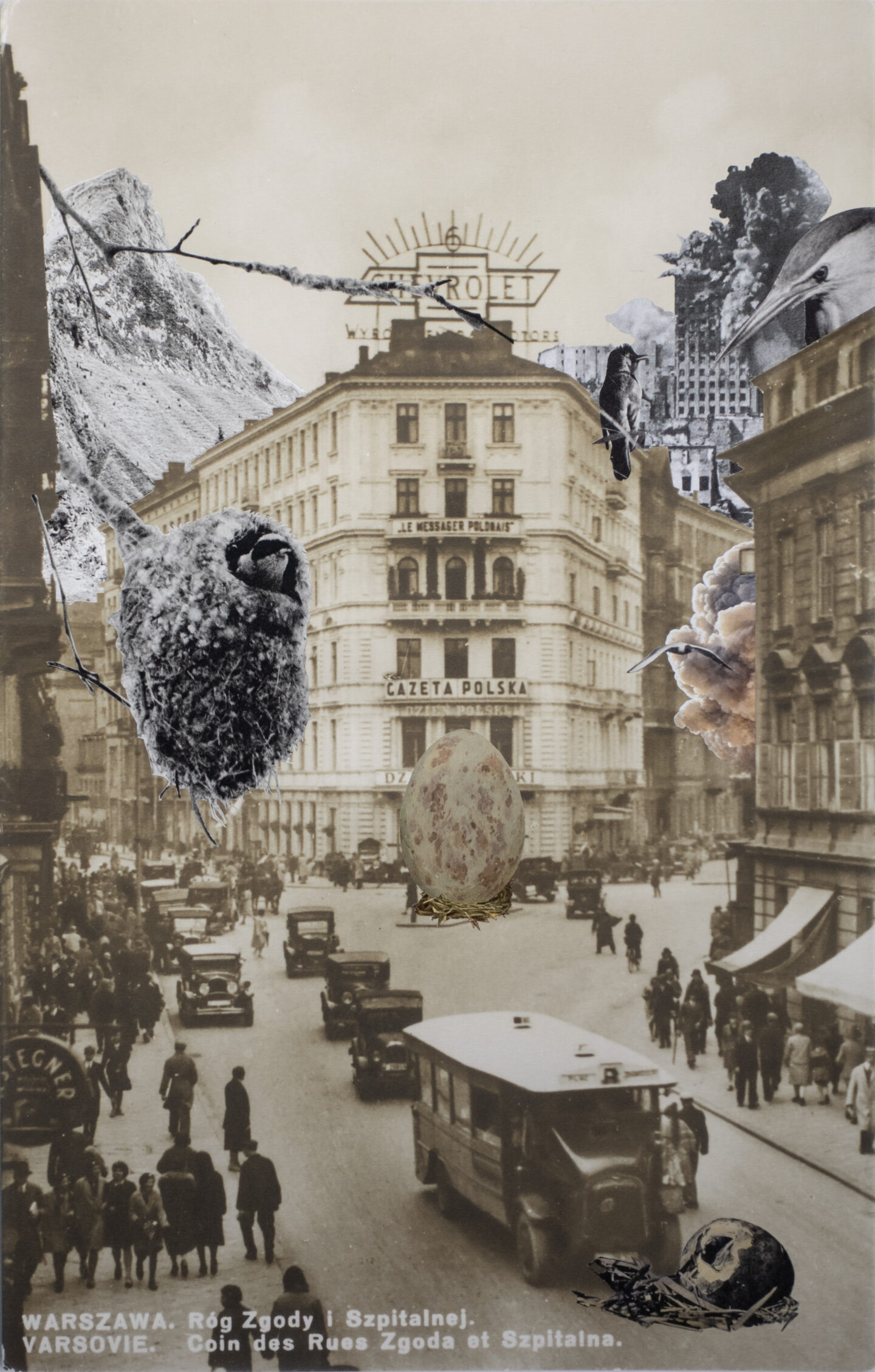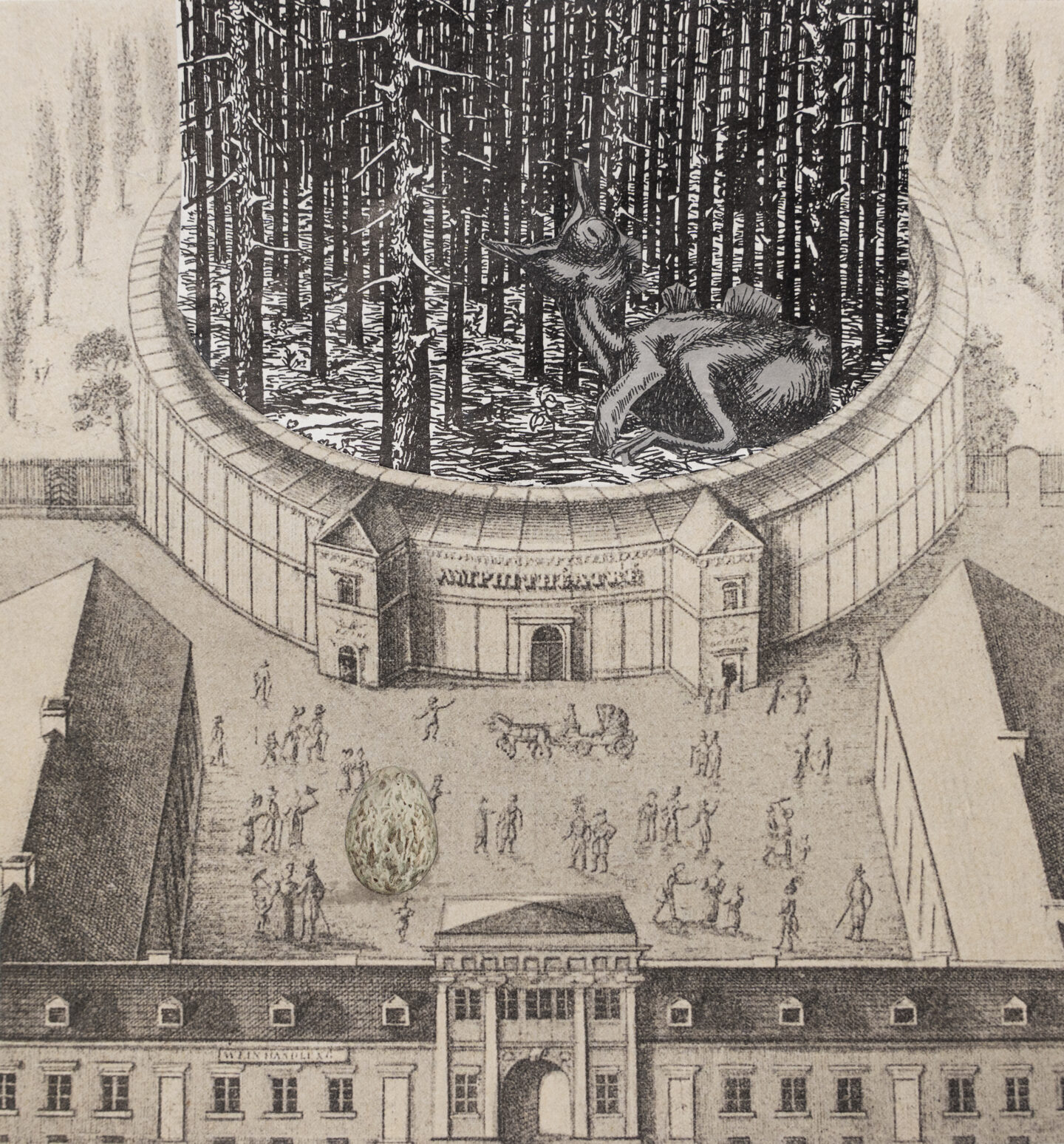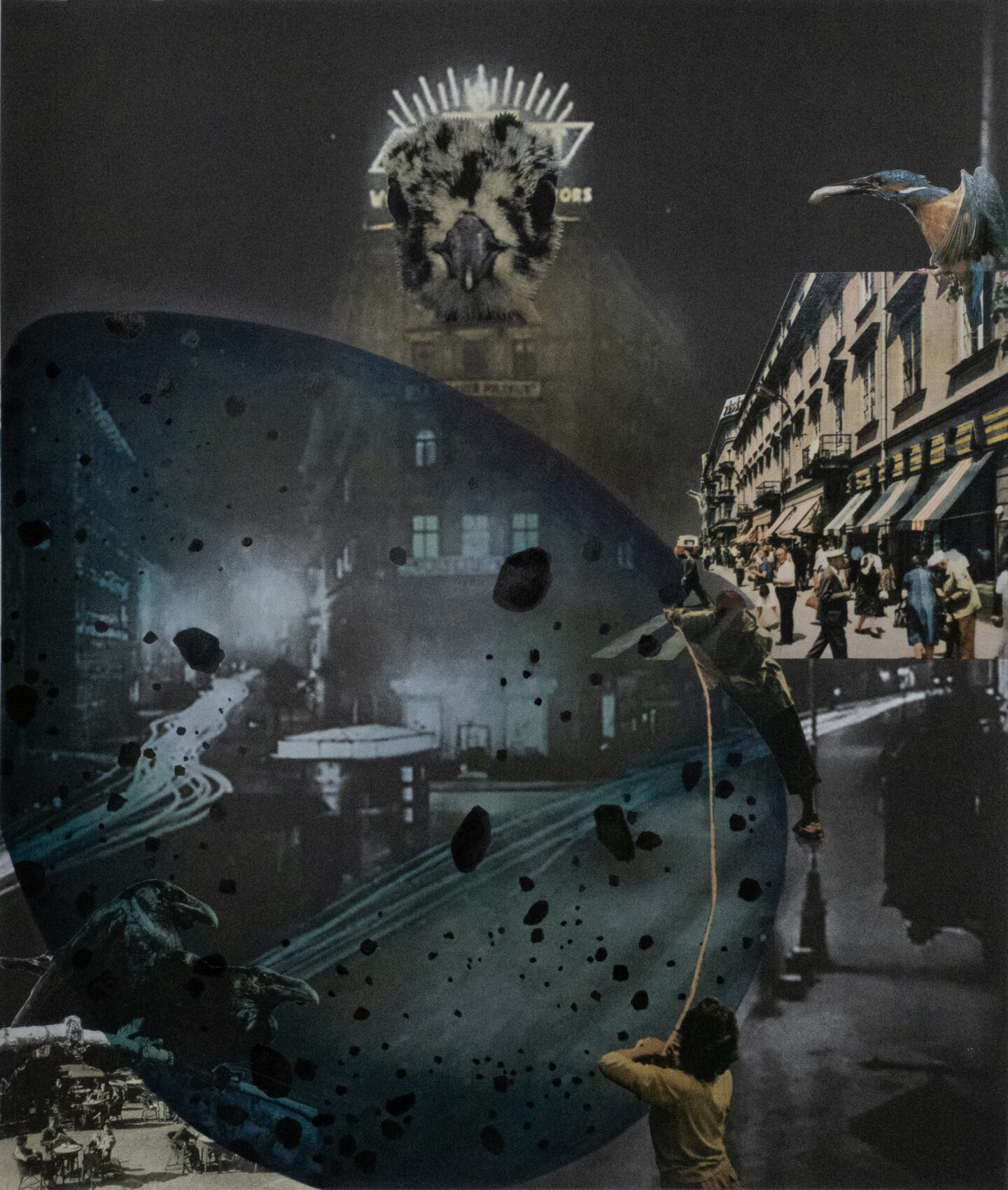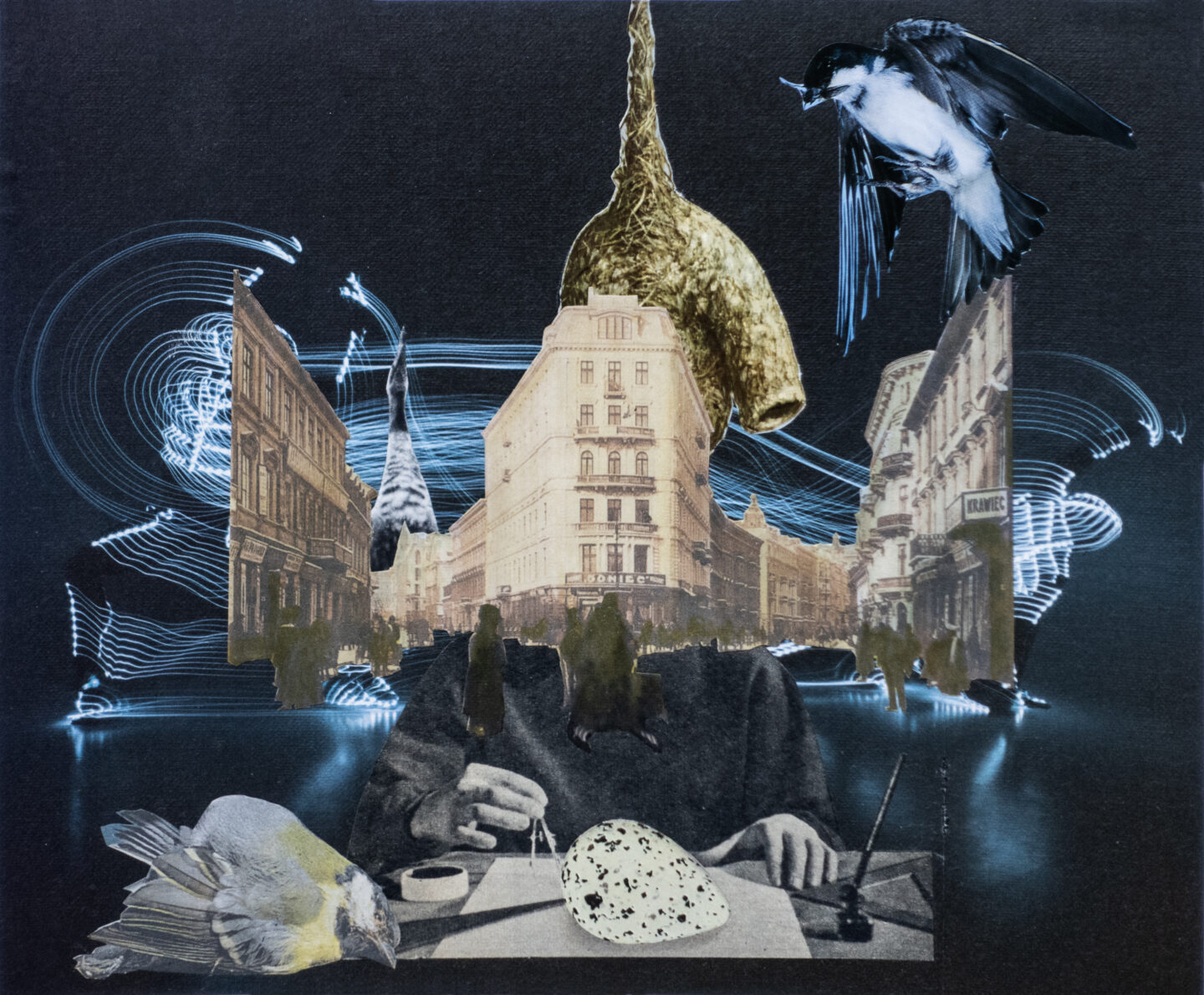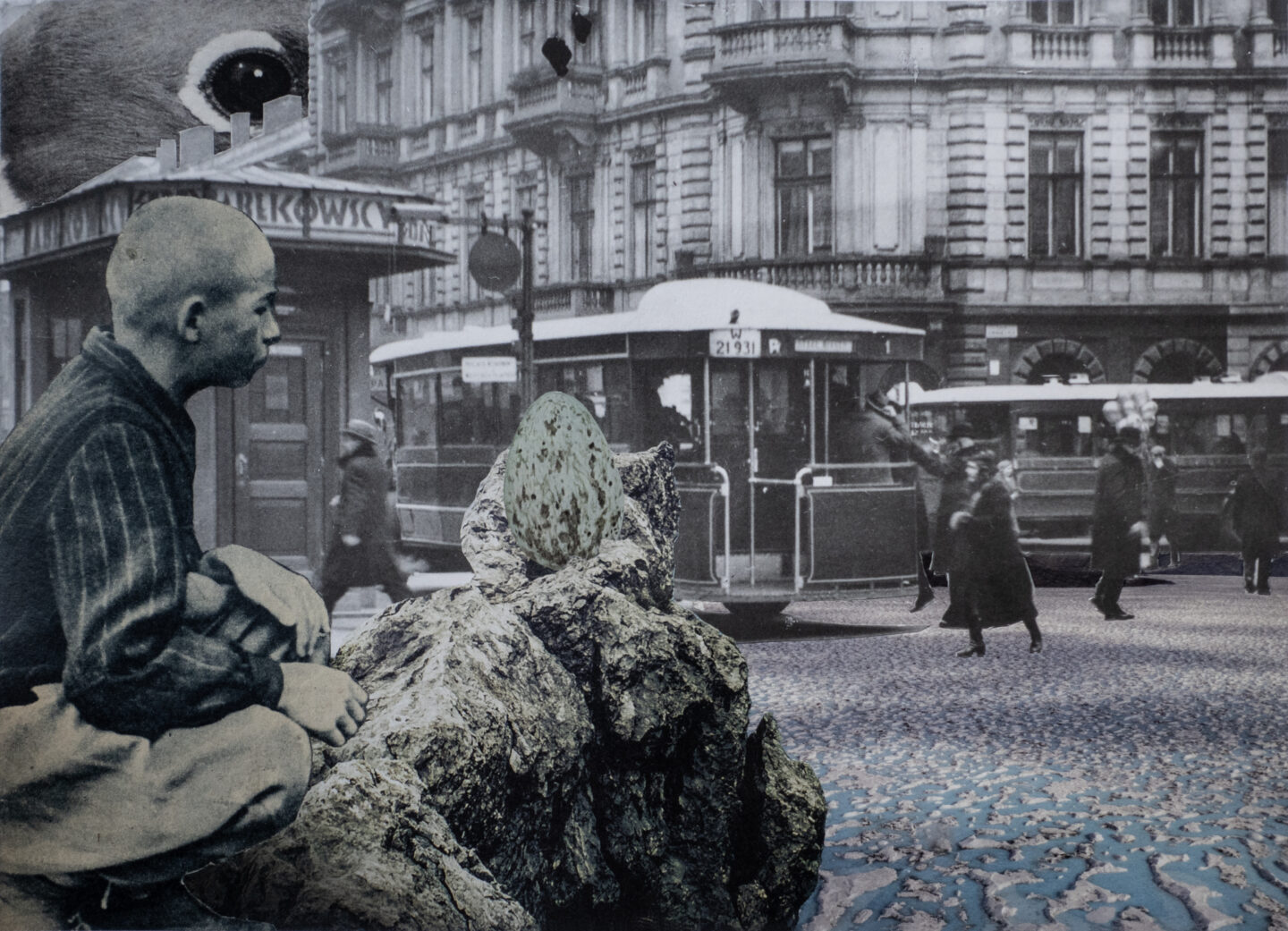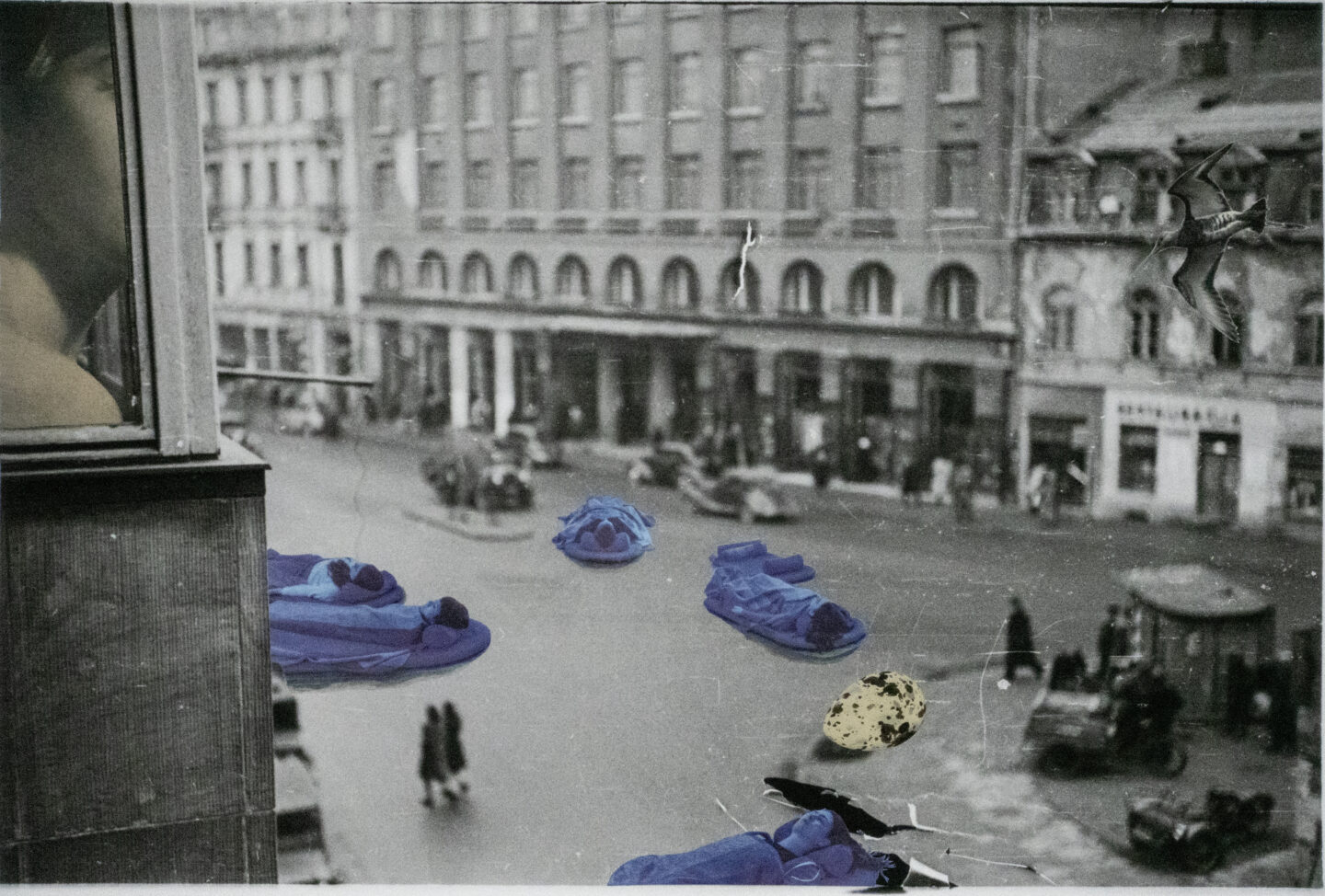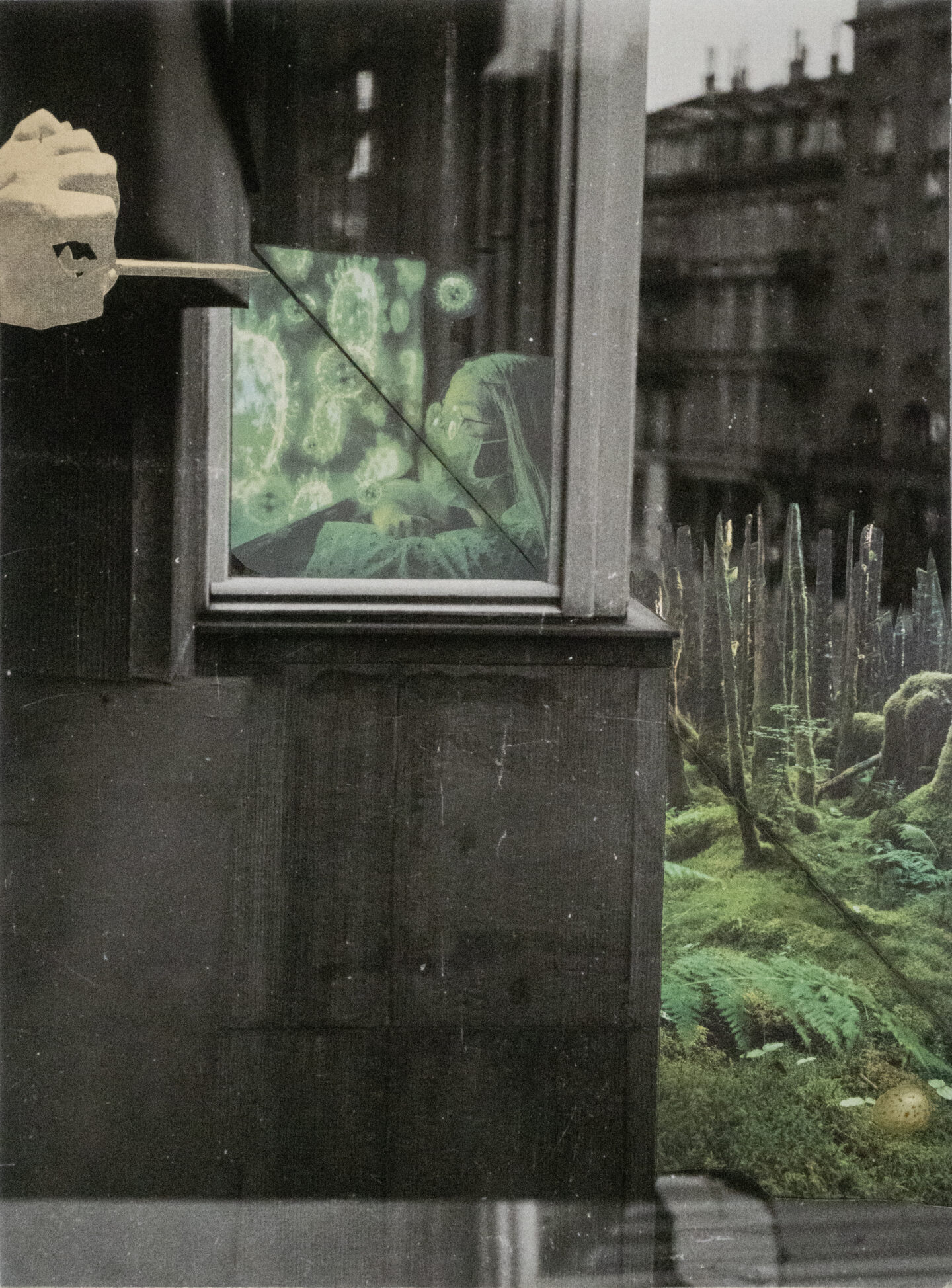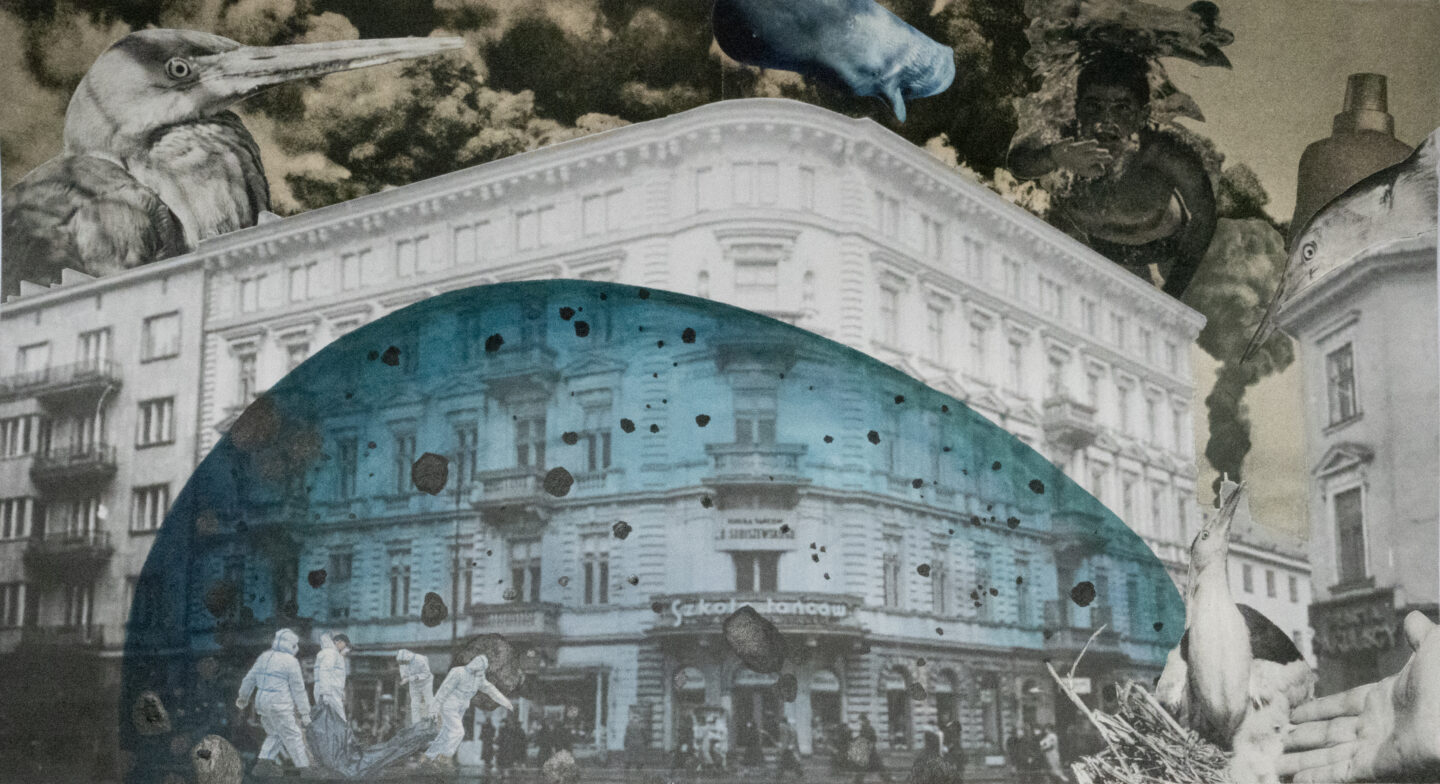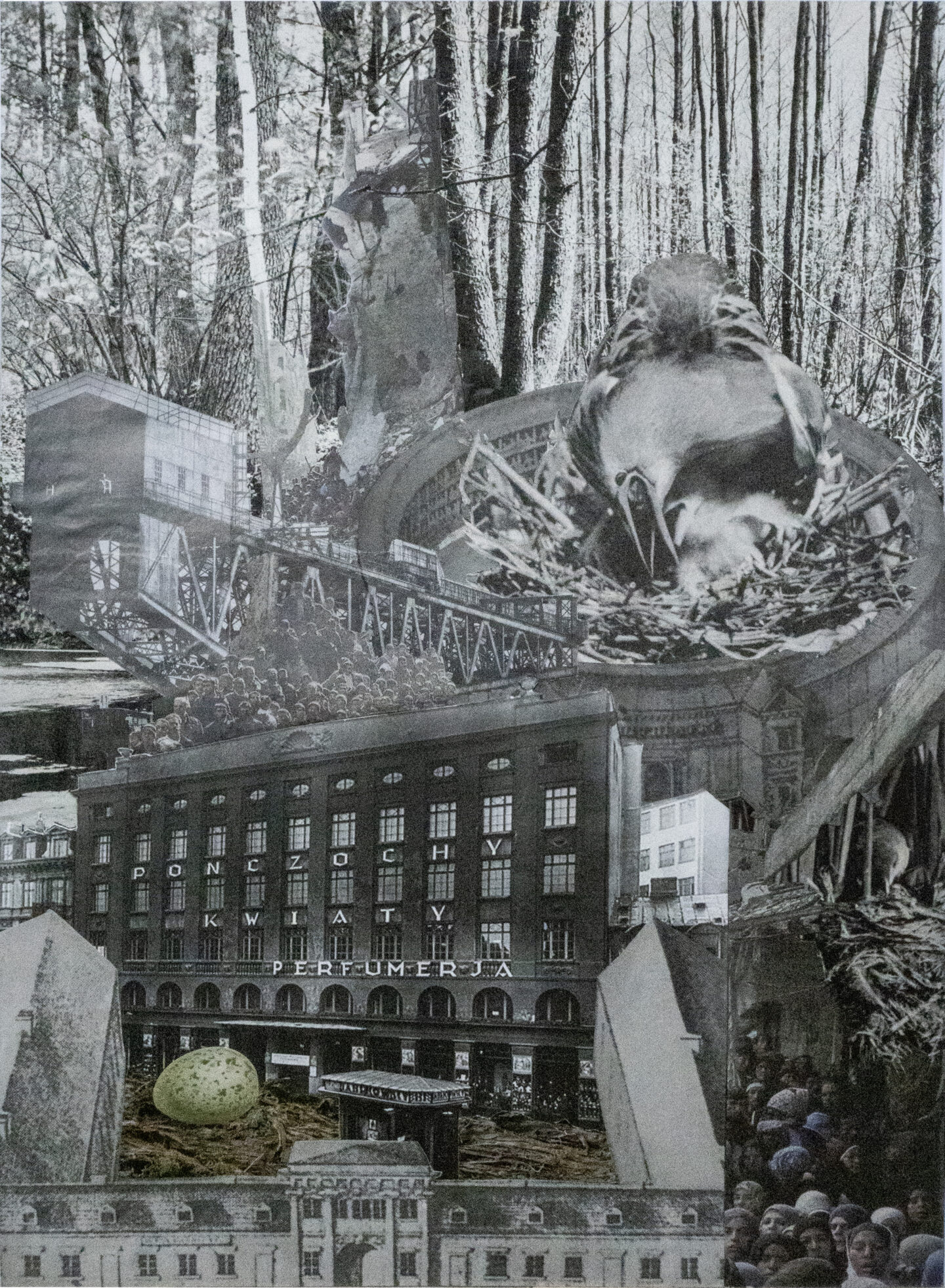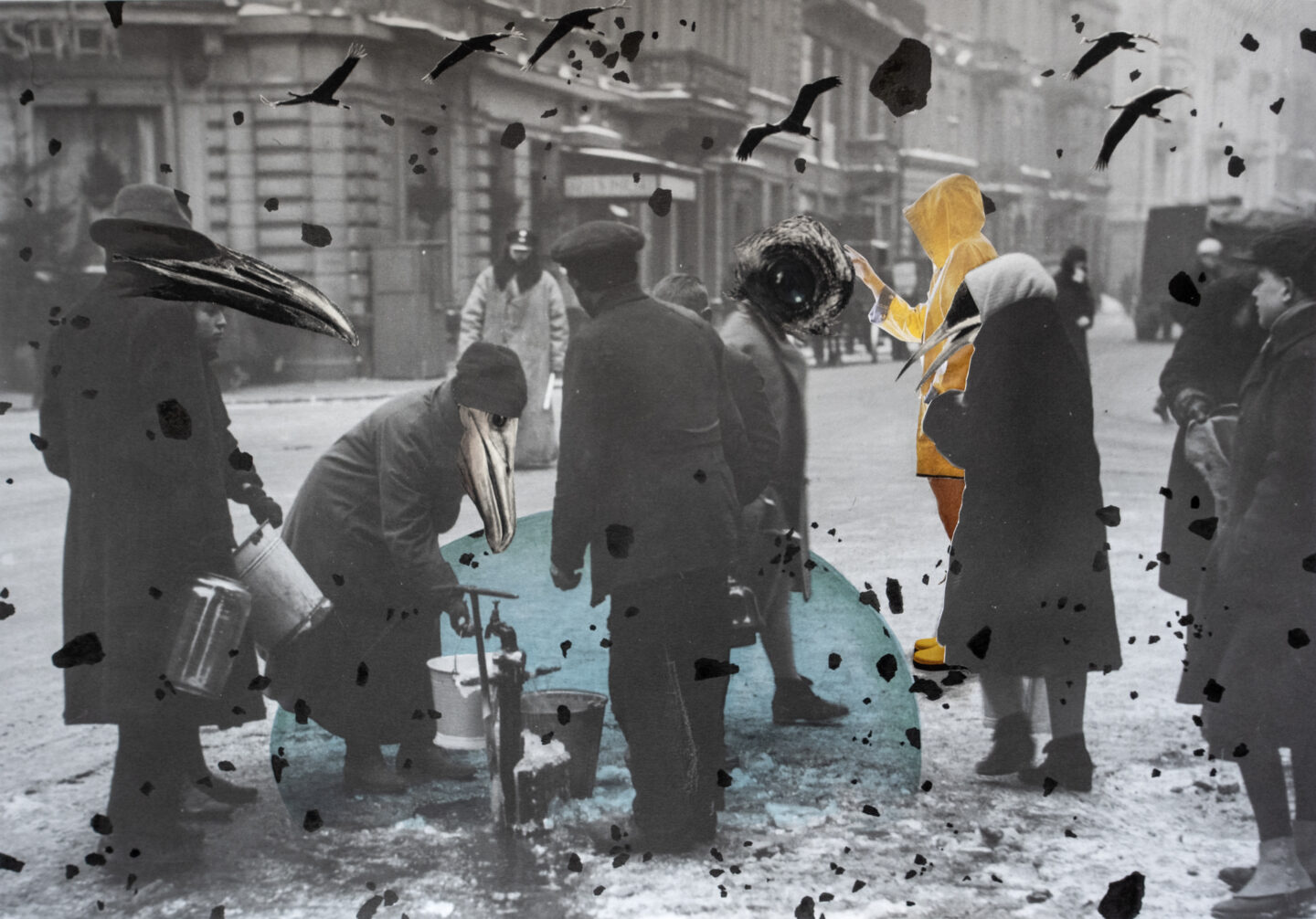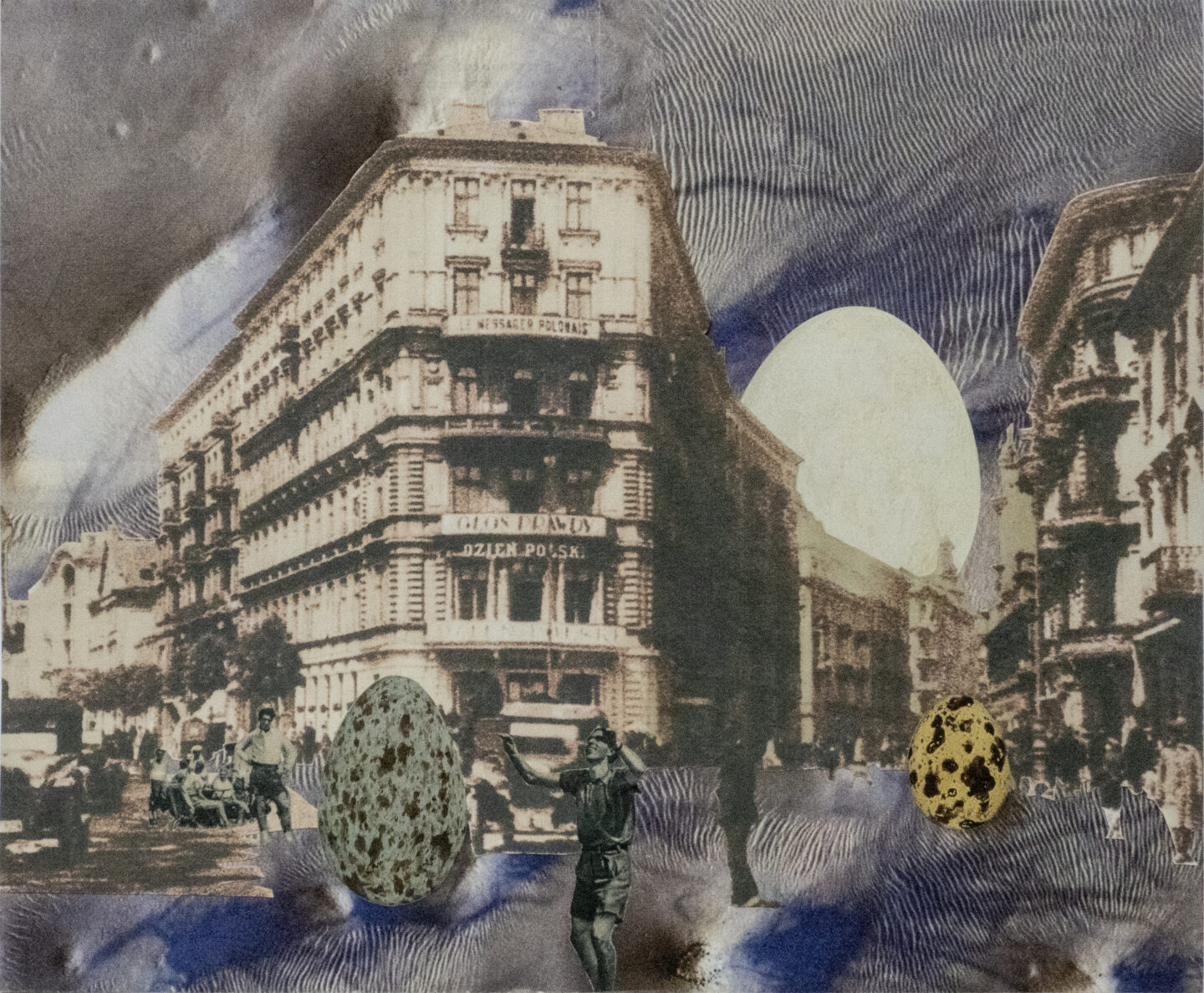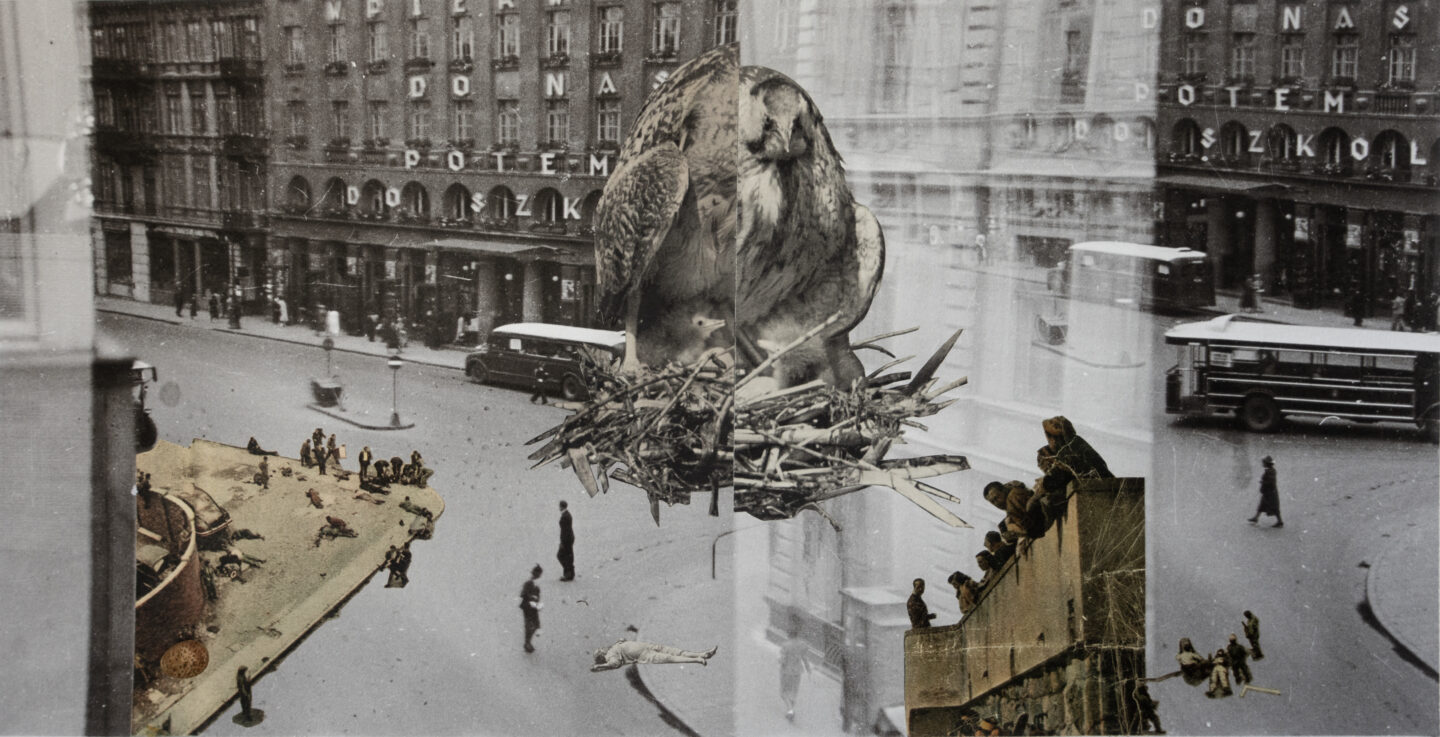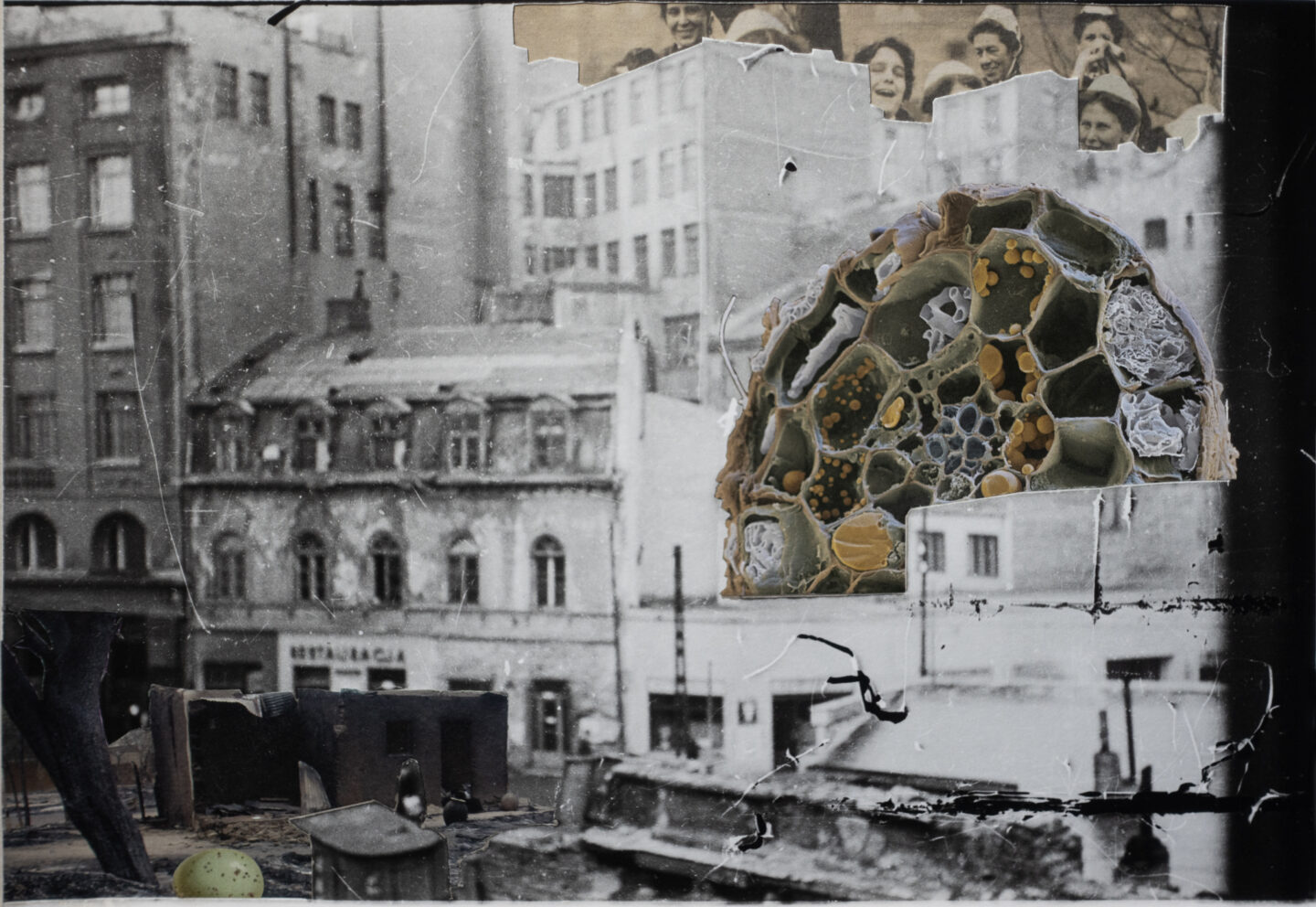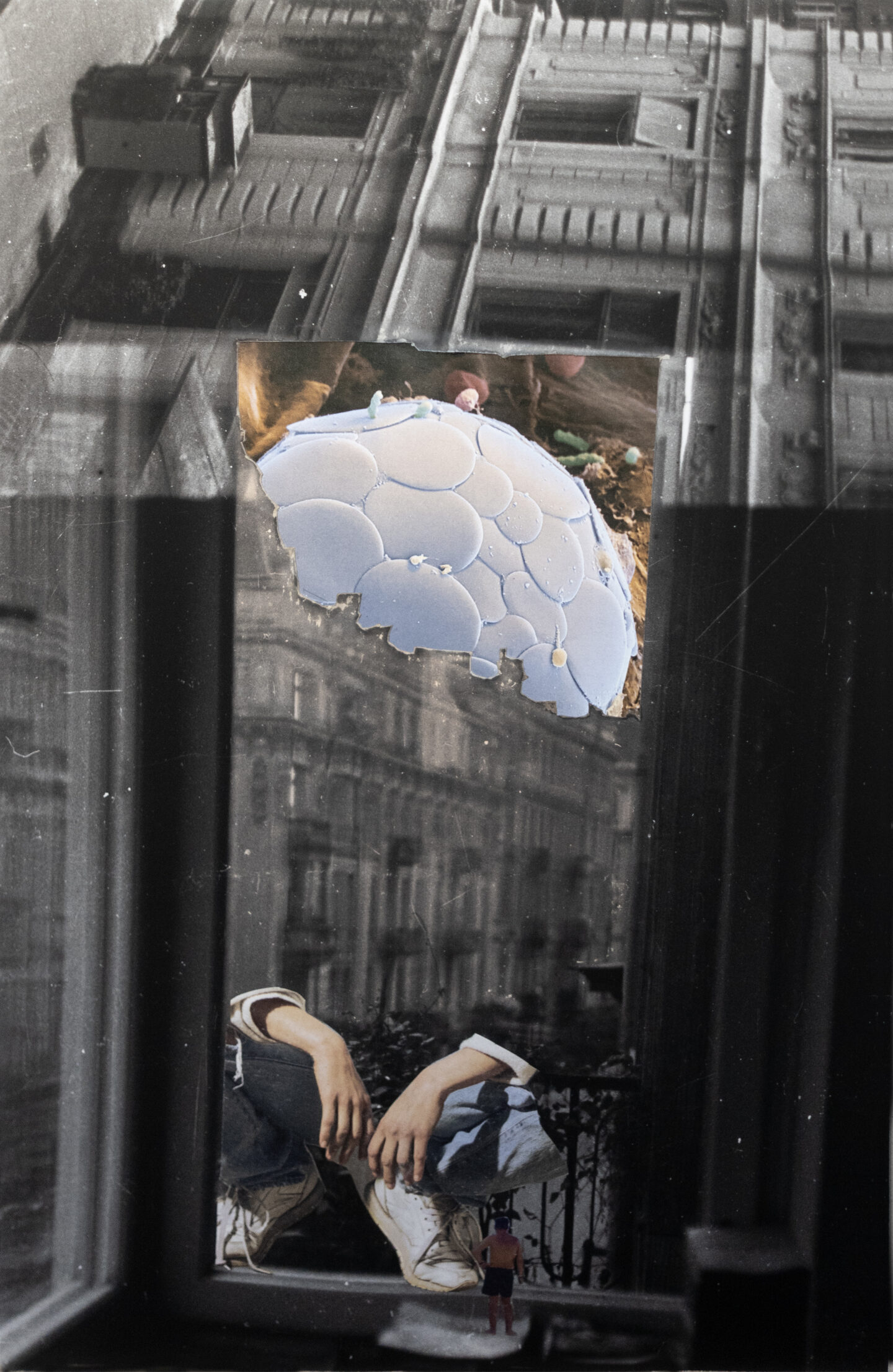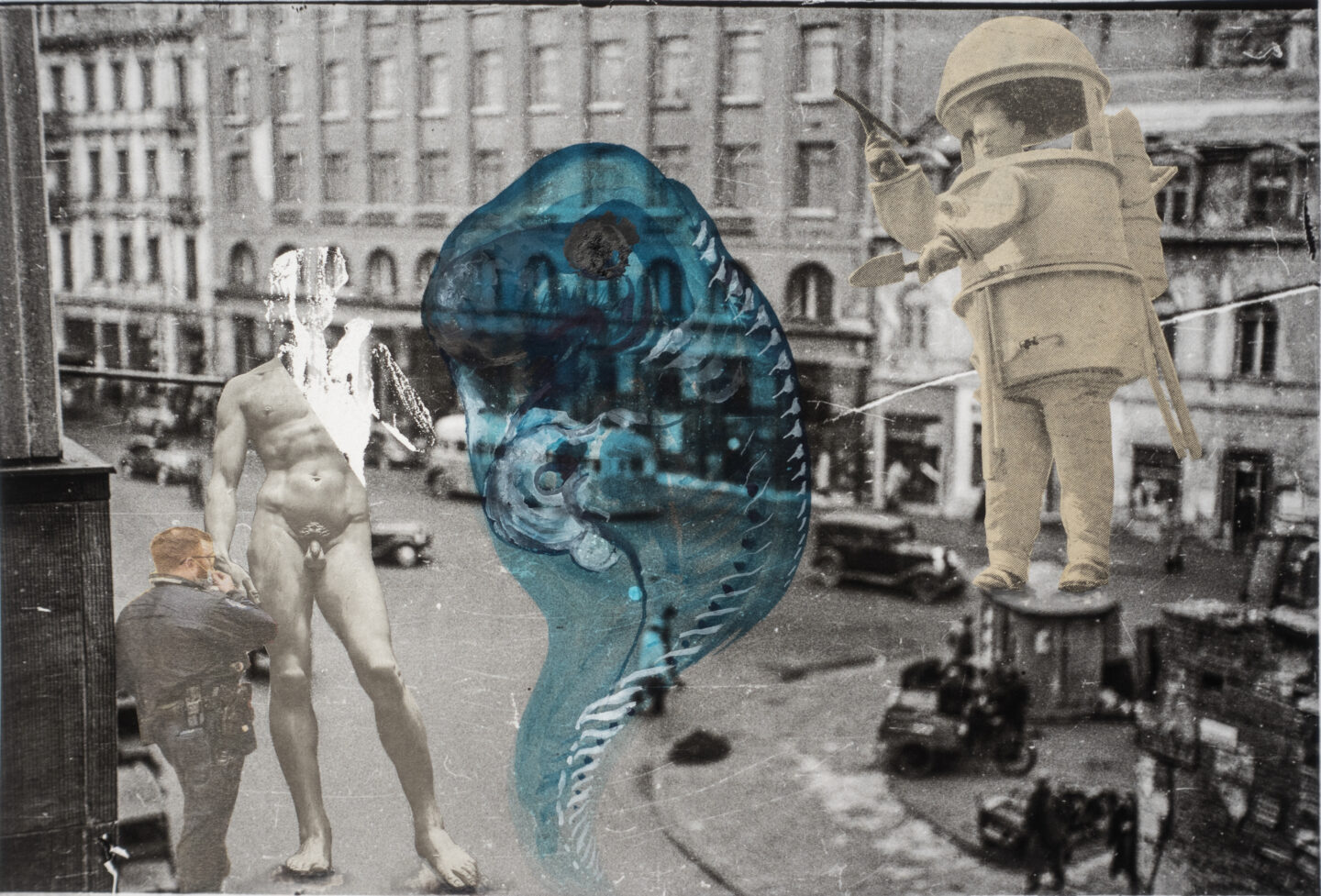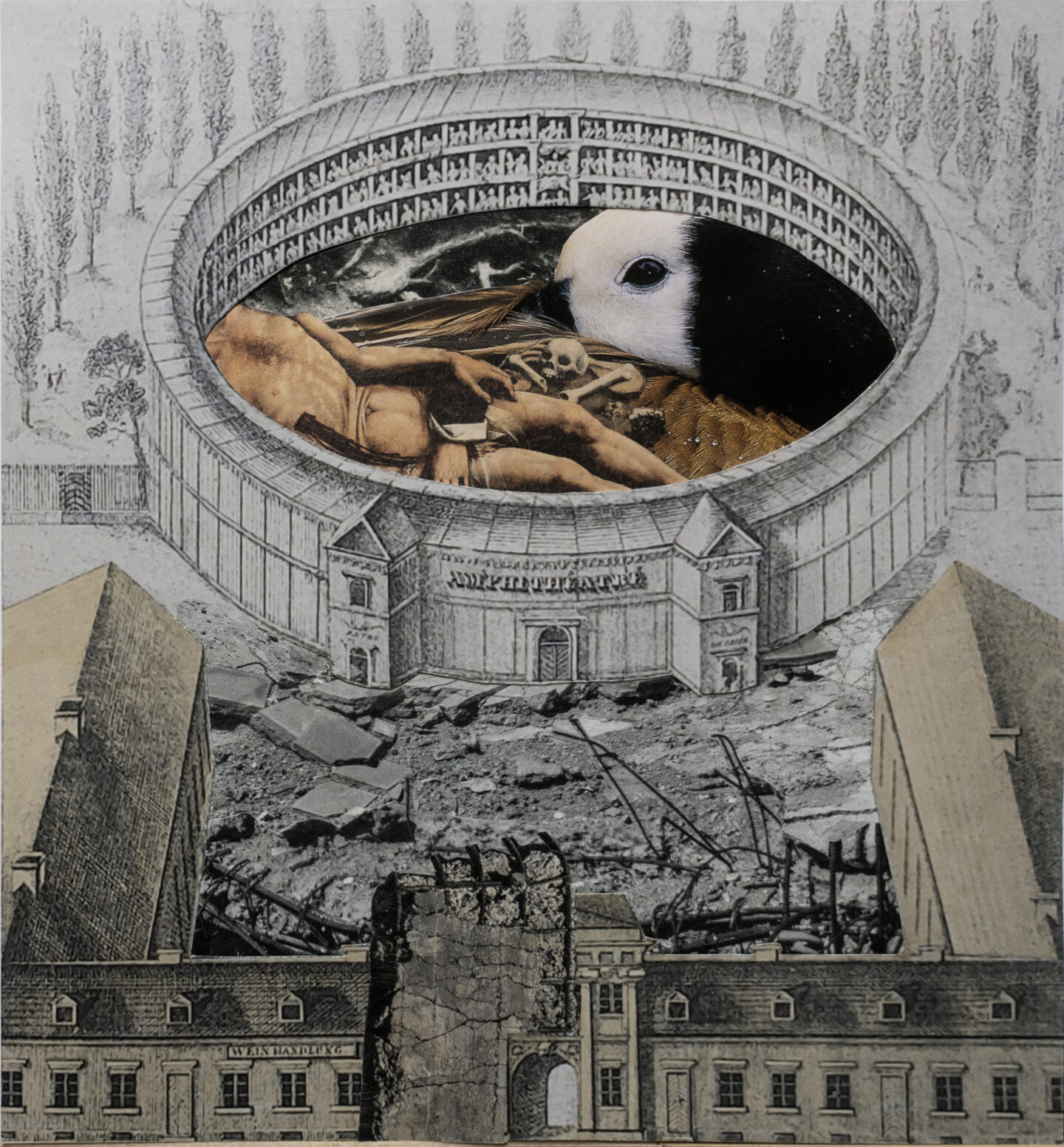Plac Pięciu Rogów (Five Corners Square)
2021-2024,
Works on paper: collage, indian ink, spiritus marker
lokal_30 Gallery, Warsaw
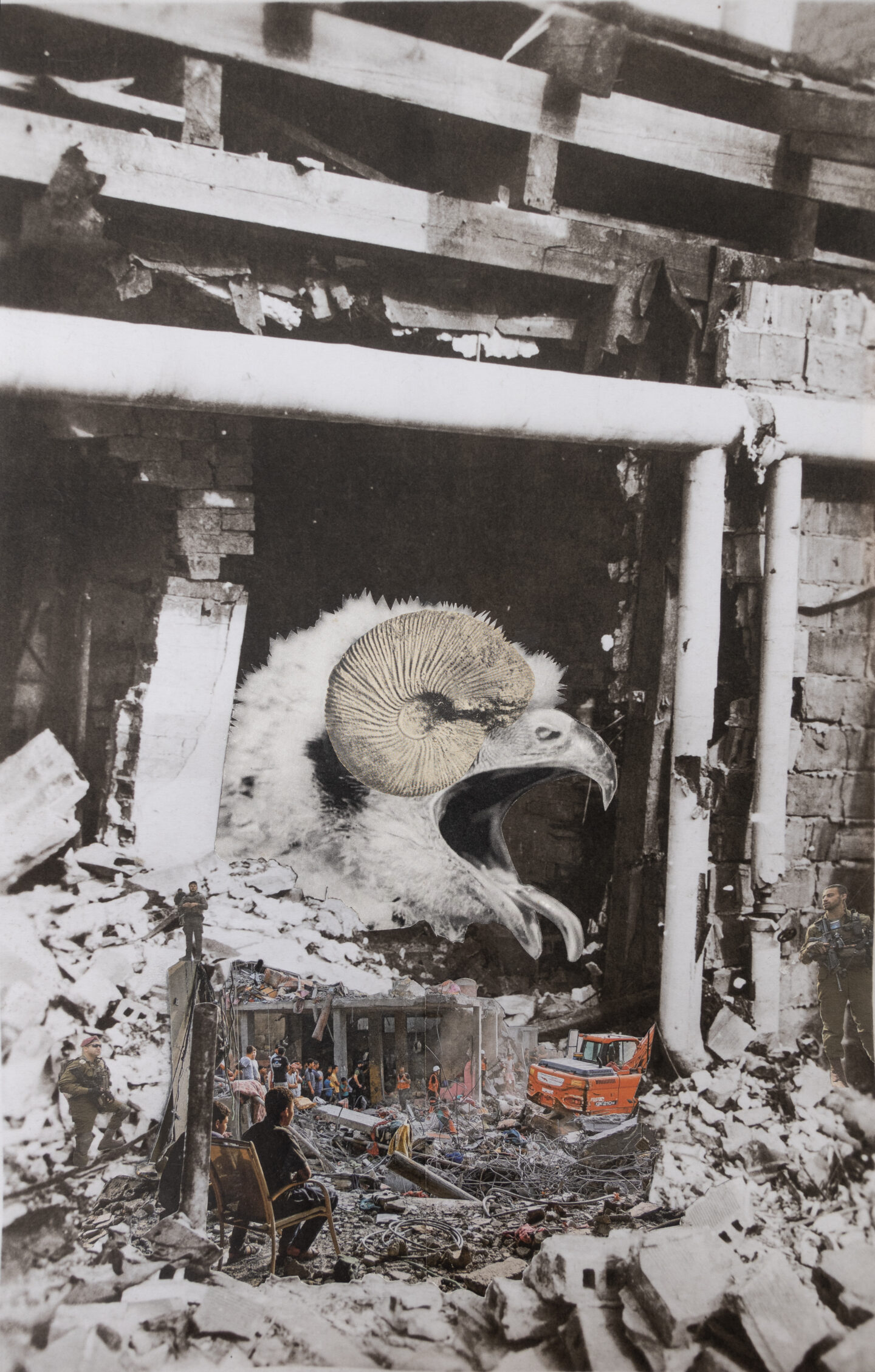
Works from the Plac Pięciu Rogów (Five Corners Square) series were created in anticipation of the installation of The Hatchling. Song Thrush sculpture. The sculpture was conceived for this square, the first decisions being made in 2018.
Reflection on the hatching of the chick, i.e. the beginning of life, and a non-human life, being the mother of an adolescent girl, and finally my attachment to the square, where my studio is located, produced a series of works on paper. All of them are collages on photographs, sometimes supplemented with Indian ink or spirit markers. The pre-war servants’ room at ul. Szpitalna 4, later used by Franciszek Habdas (a Warsaw socialist realist sculptor), and its location at the square itself, makes an excellent studio for my work.
Franciszek Habdas left me a surprise, which I discovered during the renovation of the studio. Between the plaster wall and the wall of the building, I found piles of magazines from the early 1950s. Skrzydlata Polska (Winged Poland), Młody Technik (Young Technician), Teatr (Theatre), Wiedza i Życie (Knowledge and Life), Radar (Radar), Problemy (Problems), Przekrój (Cross-Section), Poznaj Świat (Meet the World) and even Arabic magazines and Berliner Illustrierte (Berliner Illustrated), not to mention a few issues of W służbie Narodu (In the Service of the Nation).
Then, my neighbour, Mrs. Kamilla Chołoniewska, gave me some negatives of photographs taken by her father, Mieczysław Chołoniewski. He was the first occupant of our historic apartment building at Szpitalna 4 (built in 1937). He was also an amateur photographer, who followed the life in the square with great attention, observing it both from the street and from the perspective of his window on the second floor.
This is how I came to be equipped with materials that were impossible to ignore. The 1950s overlapped with the second decade of the 21st century. New Scientist, Amnesty International, Gazeta Wyborcza (The Electoral Gazette), Dzikie Życie (Wild Life), Wysokie Obcasy (High Heels), National Geographic and New Statesman provided a contemporary layer of meaning. The “fight against nature” for the progress and happiness of humanity, along with all the instruments of modernist persuasion, have been juxtaposed with the views of catastrophes and natural disasters to which progress has ultimately led.
However, the greatest master of the visual layer of the series is Włodzimierz Puchalski. It is due to the birds photographed by him that my Plac Pięciu Rogów series gained wings. It is their eyes, photographed by Puchalski, that are looking at us carefully. And this is where the proper description of the cycle begins.
Birds: in flight, standing, sitting in their nests, frightened, striding, proud, make the Plac Pięciu Rogów surreal. Dead birds, birds’ eggs, chicks. They allow the flight of the imagination and the tuning of the scale of sensitivity. Photos of Szpitalna just after the war – destroyed, crippled tenement houses, heaps of ruins – include birds that are witnesses and heroes of human history. They look at bombed Yemen, refugee camps, models of planned dams on rivers, forest fires, speeches by communist leaders and the boots of Italian fascists. They become people who emerged to get water from a frozen hydrant. Birds send these images into the future. It is they who witness the suffragettes and observe the valley of the cobalt mine in the Congo. Observing flooded cities in Pakistan and teams of dogs with sleighs drowning in water, they probe the chances of survival. And all this is happening at Plac Pięciu Rogów.
Working on this series of collages, I reached for the arsenal closest to me – surreal juxtapositions of images, situations, time orders, genres, remnants and scraps of reality. And all seen through the lens of a bird’s eye. Animals have given me a freedom of imagination that I didn’t have before.

